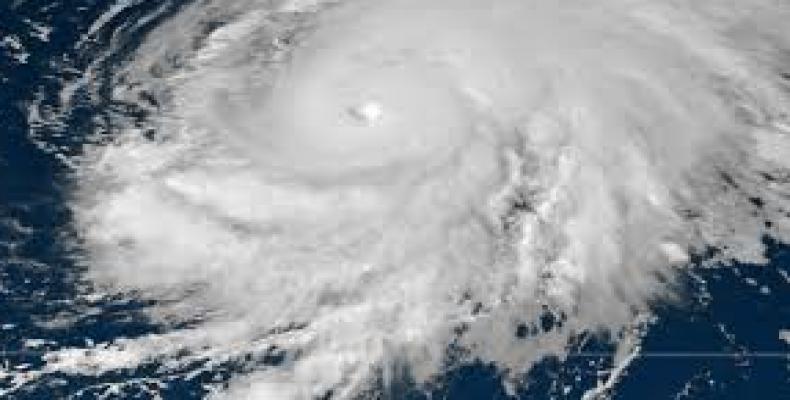Miami, September 29 (RHC)-- Hurricane Lorenzo intensified into a Category 5 hurricane over the weekend, smashing a record for the easternmost Atlantic hurricane to attain such a strong intensity, and poses a danger to the Azores later this week.
Weather experts say that this is by far the farthest east in the Atlantic Ocean any of the previous 35 Category 5 hurricanes have occurred in records dating to the 1920s.
National Hurricane Center forecaster Eric Blake noted Lorenzo became a Category 5 hurricane almost 650 miles farther east than the previous easternmost Category 5 hurricane, Hugo in 1989.
Lorenzo also had the lowest pressure for a hurricane east of 50 degrees west longitude on record and has been a major hurricane for the longest period of time east of 45 degrees west longitude on record, according to Colorado State University tropical scientist Dr. Phil Klotzbach.
Lorenzo was the second Category 5 hurricane of the 2019 Atlantic hurricane season and the sixth such top-end hurricane to form in the Atlantic Basin in a little less than three years, following Matthew, Irma, Maria, Michael and Dorian.
The National Hurricane Center (NHC) mentioned Lorenzo's wind field is large, increasing the chances it may impact the group of Portuguese islands about 900 miles west of Portugal. Heavy rain from Lorenzo may lead to life-threatening flash flooding in the Azores late Tuesday into Wednesday.
After it passes the Azores, it will lose its tropical characteristics but still be a powerful storm. What remains of Lorenzo may end up slamming into Ireland and the United Kingdom later this week with a blast of high winds and heavy rain.
According to NOAA's historical database, only seven Category 2 or stronger hurricanes have tracked within 200 nautical miles of the Azores in records dating to the mid-19th century.
Lorenzo's large circulation is generating swells over much of the North Atlantic Ocean that will lead to dangerous surf at the beaches of the East Coast of the United States, many Caribbean islands, the Bahamas, Bermuda, western Europe, Atlantic Canada and even western Africa over the next few days.


